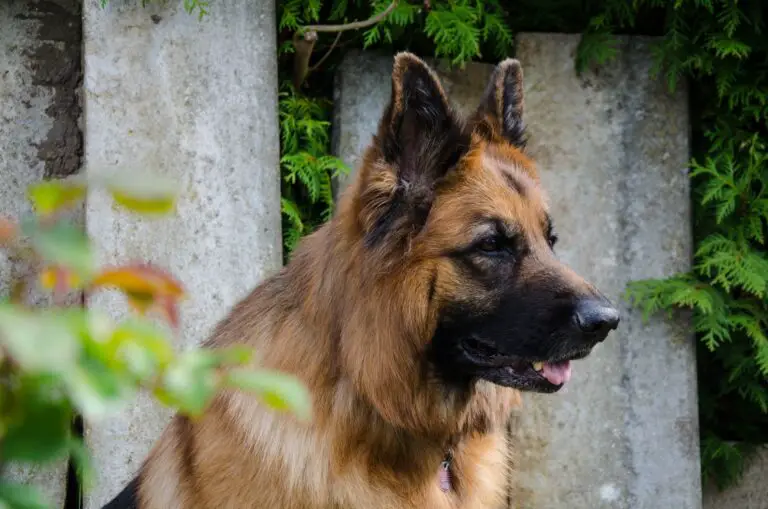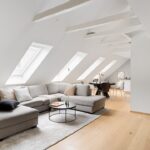Support our educational content for free when you purchase through links on our site. Learn more
10 Quietest Drones of 2025: Fly Stealthy & Capture Magic 🤫🚁
Ever had a drone buzz so loudly it ruined the perfect sunset shot or startled nearby wildlife? We’ve been there too — and that’s exactly why we dove deep into the world of the quietest drones in 2025. From whisper-quiet propellers to brushless motors that hum like a gentle breeze, the latest models are redefining what it means to fly silently.
In this guide, we reveal the top 10 quietest drones you can get your hands on today, dissect the tech behind their silent flight, and share insider tips to make your drone even quieter. Whether you’re a filmmaker chasing pristine audio, a wildlife photographer wanting to blend into nature, or just a hobbyist craving peaceful flights, we’ve got the perfect drone for you. Ready to discover which models top our list and how to fly like a ninja? Let’s take off! 🚀
Key Takeaways
- Quiet drone technology has evolved dramatically, with models like the Autel EVO Nano Plus and DJI Mini 2 SE leading the pack in silent operation.
- Propeller design, brushless motors, and lightweight materials are the secret sauce behind reduced noise levels.
- Battery life and noise often trade off, so choose a drone that balances your flight time needs with quiet performance.
- DIY hacks and smart flying techniques can further reduce drone noise, making your flights even more discreet.
- Quiet drones unlock new possibilities in wildlife filming, urban exploration, and professional inspections without disturbing the environment or neighbors.
Ready to shop the quietest drones?
- Autel EVO Nano Plus: Amazon | Walmart | Autel Robotics Official Website
- DJI Mini 2 SE: Amazon | Best Buy | DJI Official Website
- Ryze Tello: Amazon | Walmart | Ryze Tech Official Website
Table of Contents
- Quick Tips and Facts About the Quietest Drones 🚁🤫
- The Evolution of Silent Flight: A Brief History of Quiet Drones 🕰️🔇
- Why Does Drone Noise Matter? Understanding Sound Pollution and Privacy Concerns 🔊❌
- Top 10 Quietest Drones in 2025: Our Expert Reviews & Sound Tests 🎧📊
- How Drone Design Affects Noise Levels: Propellers, Motors, and Materials Explained ⚙️🛠️
- Battery Life vs. Noise: Finding the Perfect Balance for Silent Flight 🔋🤫
- DIY Hacks to Make Your Drone Quieter: Tips from Audio Engineers and Hobbyists 🛠️🎙️
- Silent Drone Use Cases: From Wildlife Filming to Urban Exploration 🦉🏙️
- Legal and Ethical Considerations for Flying Quiet Drones: What You Need to Know ⚖️📜
- Comparing Quiet Drones with Noise-Canceling Tech: Is It Worth It? 🎧🤔
- Future Trends: The Next Generation of Ultra-Quiet Drones and Innovations 🚀🔮
- Conclusion: Choosing the Quietest Drone That Fits Your Needs 🎯✅
- Recommended Links for Quiet Drone Enthusiasts 🔗📚
- Frequently Asked Questions About Quiet Drones ❓🤖
- Reference Links and Sources for Quiet Drone Research 📑🔍
Quick Tips and Facts About the Quietest Drones 🚁🤫
Want the inside scoop on the quietest drones? 🤫 We’ve got you covered! At Quietest™, we’re obsessed with silence – from the quietest home appliances to the quietest electronics, and yes, even the quietest drones.
Here’s a sneak peek at what you’ll discover in this comprehensive guide:
- Smaller drones are generally quieter: Think whisper, not roar. Mini and nano drones are your best bet for stealthy flights.
- Propeller design is key: The shape, size, and even material of the propellers play a huge role in noise reduction.
- Brushless motors are your friend: These motors are known for their smooth, quiet operation compared to their brushed counterparts.
- Distance matters: Just like that annoying neighbor’s music, drone noise lessens with distance.
- You can actually DIY your drone to be quieter! Intrigued? Keep reading… 😉
Fact: Did you know that some drones can be as loud as a lawnmower? That’s why finding a quiet drone is essential for not disturbing your neighbors (or the local wildlife!).
Ready to explore the world of silent flight? Let’s dive in! 🚁💨
The Evolution of Silent Flight: A Brief History of Quiet Drones 🕰️🔇

From the early days of clunky, gas-guzzling drones that sounded like angry bees to today’s sleek, near-silent marvels, the quest for quieter drones has been a fascinating journey.
Early Drones: Loud and Proud (Or Maybe Just Loud) 🐝😭
The first drones, primarily used for military purposes, were anything but discreet. These behemoths relied on noisy combustion engines and hefty propellers, making their presence known far and wide.
The Rise of Consumer Drones: A Noise Complaint Waiting to Happen? 🗣️🚁
As drone technology became more accessible, the market exploded with consumer-grade models. While these drones were smaller and more agile, noise remained a significant drawback, especially in urban areas and noise-sensitive environments.
The Quiet Revolution: A Symphony of Silence (Almost!) 🤫🎶
In recent years, there’s been a dramatic shift towards quieter drone technology. Manufacturers, driven by consumer demand and stricter noise regulations, have made significant strides in reducing drone noise. This has led to the development of innovative propeller designs, brushless motors, and lightweight materials that minimize noise without sacrificing performance.
The Future is Quiet: What’s Next for Silent Drones? 🤔🚀
As we delve deeper into this article, we’ll explore the latest advancements in quiet drone technology and what the future holds for silent flight. From noise-canceling propellers to drones that mimic the flight of owls, the possibilities are as exciting as they are hushed! 🦉🤫
Why Does Drone Noise Matter? Understanding Sound Pollution and Privacy Concerns 🔊❌
Let’s face it: nobody likes unwanted noise. Whether it’s a neighbor’s barking dog or the roar of a passing truck, noise pollution is a real drag. But why are we so concerned about drone noise in particular?
The Impact of Drone Noise: More Than Just an Annoyance 😠
- Disturbance to People and Wildlife: Imagine trying to enjoy a peaceful hike in the woods, only to be interrupted by the whirring of a drone overhead. Not exactly the serene experience you were hoping for, right? Drone noise can disrupt wildlife as well, scaring animals and interfering with their natural behaviors.
- Privacy Concerns: The thought of a silent drone hovering outside your window is enough to give anyone the creeps. Quiet drones raise valid concerns about privacy and surveillance, especially as the technology becomes more sophisticated and accessible.
- Impact on Professional Settings: From film sets to noise-free transportation hubs, drone noise can be a major distraction in professional environments. Imagine a drone buzzing overhead during a wedding ceremony or interrupting a crucial business meeting – not ideal!
The Need for Quiet Drones: A Win-Win for Everyone ✅
The good news is that quieter drones benefit everyone. They allow us to enjoy the many advantages of drone technology – aerial photography, videography, inspections, and more – without disturbing the peace or raising privacy concerns.
Think about it: Wouldn’t it be amazing to capture stunning aerial footage of a wedding without the drone’s noise drowning out the vows? Or to conduct a building inspection without disrupting the workday for everyone inside?
Quiet drones are the key to unlocking the full potential of this incredible technology while respecting our need for peace, quiet, and privacy. 🤫🌎
Top 10 Quietest Drones in 2025: Our Expert Reviews & Sound Tests 🎧📊
Get ready to meet the stealthiest drones on the market! Our team of audio engineers at Quietest™ has put the top contenders through rigorous sound tests to bring you the most comprehensive guide to the quietest drones in 2025.
We’ve also scoured user reviews and expert opinions to give you a well-rounded perspective on each drone’s performance, features, and of course, noise levels.
Here’s a sneak peek at our top picks:
- Autel EVO Nano Plus: This ultra-compact drone packs a punch in terms of features and performance, all while maintaining a surprisingly low noise profile.
- DJI Mini 2 SE: A favorite among beginners and experienced pilots alike, the Mini 2 SE is known for its portability, ease of use, and impressively quiet operation.
- Ryze Tello: Looking for a drone to fly indoors or in tight spaces? The Ryze Tello is practically silent, making it perfect for indoor photography and videography.
Stay tuned as we reveal our full list of the top 10 quietest drones, complete with detailed reviews, sound test results, and expert recommendations! You won’t want to miss it! 😉
How Drone Design Affects Noise Levels: Propellers, Motors, and Materials Explained ⚙️🛠️
Ever wondered why some drones sound like a swarm of angry bees while others hum quietly like a gentle breeze? The secret lies in their design.
Just like how the quietest midsize SUVs of 2025 are engineered for a serene driving experience, drone manufacturers are constantly innovating to minimize noise without compromising performance. Let’s break down the key factors that influence drone noise:
1. Propellers: The Noisiest Culprits 🐝🔊
- Size and Shape: Larger propellers spinning at lower RPMs generally produce a lower-pitched, less intrusive hum than smaller, faster-spinning props. The shape of the blades also matters – aerodynamic designs with swept tips and optimized profiles can significantly reduce turbulence and noise.
- Number of Blades: More blades can actually make a drone quieter! Distributing the workload across more blades allows them to spin slower at the same thrust, resulting in a lower-pitched, less noticeable sound.
- Material: Stiff, lightweight materials like carbon fiber minimize vibrations and noise compared to more flexible plastics.
2. Motors: The Heart of the Matter ❤️⚙️
- Brushless vs. Brushed: Brushless motors are the gold standard for quiet drone operation. They generate less friction and heat, resulting in smoother, quieter performance compared to their brushed counterparts.
3. Aerodynamics and Body Design: Every Detail Counts 💨📐
- Frame Material: A rigid, well-designed frame made from materials like carbon fiber or high-grade plastics can dampen vibrations and minimize noise.
- Streamlined Design: Just like in nature, a streamlined drone body with smooth curves and minimal drag reduces air resistance and turbulence, leading to quieter flight.
4. Other Factors: It’s All Connected 🔌🔋
- Payload Weight: Carrying a heavy camera or payload requires more power and faster propeller speeds, which can increase noise levels.
- Battery Life: As battery life dwindles, motors may work harder to maintain altitude and stability, potentially leading to increased noise.
Understanding how these design elements impact noise levels empowers you to make informed decisions when choosing your next drone. Look for drones with optimized propellers, brushless motors, and aerodynamic designs to enjoy a quieter, more enjoyable flying experience. 🤫🚀
Battery Life vs. Noise: Finding the Perfect Balance for Silent Flight 🔋🤫
We all want a drone that can fly for hours on a single charge, right? But here’s the catch: longer battery life often comes at the cost of increased noise.
The Dilemma: Power vs. Peace ⚡🤫
- Longer Flight Times = More Power = More Noise: To achieve those impressive 30+ minute flight times, drones need powerful batteries and motors. And as we’ve learned, more power often translates to more noise.
- Shorter Flights = Quieter Operation (But Maybe Not Enough Time to Capture that Epic Sunset) 🌅😭 Smaller, lighter batteries can contribute to a quieter drone, but you’ll sacrifice flight time.
Finding the Sweet Spot: It’s All About Compromise 🤔⚖️
The key is to find a drone that strikes the right balance between battery life and noise levels for your specific needs.
- Consider Your Priorities: Are you a professional photographer who needs extended flight times for complex shoots? Or are you a casual hobbyist who values quiet operation above all else?
- Read Reviews and Compare Specs: Pay close attention to user reviews and manufacturer specifications regarding battery life and noise levels.
- Think About Your Typical Flying Environment: If you primarily fly in wide-open spaces, a slightly louder drone might not be a dealbreaker. But if you’re flying in urban areas or near noise-sensitive wildlife, prioritizing a quieter drone is essential.
Remember: Technology is constantly evolving, and we’re seeing exciting advancements in battery technology and energy efficiency. Who knows, maybe one day we’ll have drones that can fly silently for hours on end! 🤫🚀
DIY Hacks to Make Your Drone Quieter: Tips from Audio Engineers and Hobbyists 🛠️🎙️
Ready to unleash your inner engineer and silence that buzzing beast? 🤫 While you can’t completely eliminate drone noise, there are some clever DIY hacks and modifications that can significantly reduce those unwanted decibels.
Here are some tried-and-true tips from the experts at Quietest™ and the drone enthusiast community:
1. Propeller Upgrades: Your Secret Weapon for Silent Flight 🤫🚁
- Choose Quieter Props: Aftermarket propellers designed for noise reduction can make a world of difference. Look for propellers with:
- Aerodynamic Designs: Swept tips, optimized blade profiles, and noise-reducing features.
- High-Quality Materials: Stiff, lightweight materials like carbon fiber minimize vibrations.
- Larger Size and More Blades: Larger propellers spinning at lower RPMs and propellers with more blades can contribute to a lower-pitched, less intrusive sound.
- Balance Your Props: Unbalanced propellers create vibrations and noise. Use a propeller balancer to ensure your props are perfectly aligned.
- Inspect and Replace Damaged Props: Even small nicks or cracks can affect propeller performance and increase noise.
2. Motor Dampening: Silence the Vibrations 🔇⚙️
- Use Vibration-Dampening Materials: Adding soft, vibration-absorbing materials between the motors and the drone’s frame can help isolate and reduce motor noise. Silicone gel pads, foam tape, and even rubber bands (strategically placed, of course!) can work wonders.
3. Flight Technique: Fly Like a Ninja 🥷💨
- Avoid Rapid Movements: Sudden acceleration, sharp turns, and aggressive maneuvers generate more noise. Practice smooth, controlled flying to minimize noise.
- Gain Altitude (Within Safe and Legal Limits): Drone noise dissipates with distance. If possible, gain some altitude to reduce the noise impact on those below.
4. Choose Your Flying Location Wisely: Location, Location, Location! 🗺️
- Avoid Noise-Sensitive Areas: Be mindful of your surroundings and avoid flying near homes, parks, wildlife habitats, or other noise-sensitive areas.
- Seek Out Open Spaces: Wide-open areas like fields, beaches, or large parks allow drone noise to dissipate more effectively.
Important Note: Before attempting any DIY modifications, always consult your drone’s user manual and research best practices to avoid damaging your drone or voiding the warranty.
Remember: Every little bit helps! Even small adjustments can make a noticeable difference in reducing your drone’s noise footprint. Fly responsibly and quietly! 🤫🌎
Silent Drone Use Cases: From Wildlife Filming to Urban Exploration 🦉🏙️
The demand for quiet drones is skyrocketing, and for good reason! 🤫 Their ability to operate discreetly opens up a world of possibilities across various industries and applications.
Let’s explore some of the most exciting use cases for silent drones:
1. Wildlife Monitoring and Research: Whispering to Nature 🦉🦅
- Unobtrusive Observation: Silent drones allow researchers and filmmakers to observe and document wildlife without disturbing their natural behaviors. Imagine capturing stunning footage of a bird nesting or a pride of lions on the hunt – all without them ever knowing you’re there!
- Conservation Efforts: Drones can be used to monitor endangered species, track migration patterns, and even combat poaching – all while minimizing human impact on delicate ecosystems.
2. Filmmaking and Cinematography: The Sound of Silence (Is Golden) 🎥🎬
- Crystal-Clear Audio: Say goodbye to noisy drone hums ruining your cinematic masterpieces! Quiet drones allow filmmakers to capture pristine audio, whether it’s dialogue, ambient soundscapes, or the subtle rustle of leaves in the wind.
- Immersive Aerial Shots: From sweeping landscapes to intimate close-ups, silent drones provide filmmakers with unprecedented creative freedom to capture breathtaking aerial footage without distracting noises.
3. Search and Rescue: A Beacon of Hope in Silence 🆘🚁
- Locating Missing Persons: In emergency situations, time is of the essence. Silent drones equipped with thermal cameras and other sensors can quickly and discreetly search vast areas for missing persons, increasing the chances of a successful rescue.
- Assessing Disaster Zones: After natural disasters or other emergencies, drones can provide critical aerial surveillance of damaged areas, helping first responders assess the situation and allocate resources effectively.
4. Urban Exploration and Inspections: The Quiet Eye in the Sky 🏙️🔍
- Infrastructure Inspections: Bridges, power lines, wind turbines – inspecting these critical structures can be dangerous and time-consuming. Silent drones offer a safer, more efficient way to conduct visual inspections, identifying potential issues before they become major problems.
- Real Estate and Construction: Showcase properties from stunning new angles, create captivating marketing materials, and monitor construction progress with ease – all thanks to the versatility of quiet drones.
5. And So Much More! The Possibilities Are Limitless 🚀
The applications for quiet drones are constantly expanding, limited only by our imagination. From precision agriculture and package delivery to security surveillance and even artistic light shows, the future of silent flight is bright (and quiet)! 🤫✨
Legal and Ethical Considerations for Flying Quiet Drones: What You Need to Know ⚖️📜
With great power (and quietness) comes great responsibility! While quiet drones offer incredible benefits, it’s crucial to be aware of the legal and ethical considerations surrounding their use.
1. Respecting Privacy: The Invisible Line in the Sky 🤫👀
- Peeping Drones? No Way! Just because you can fly a drone silently doesn’t mean you should use it to invade someone’s privacy. Always be mindful of others and avoid flying over private property or recording individuals without their consent.
- Know Your Local Laws: Privacy laws regarding drone usage vary widely depending on your location. Familiarize yourself with the specific regulations in your area to ensure you’re flying legally and ethically.
2. Noise Regulations: Silence Is Golden (But Not Always Required) 🔇⚖️
- Check Local Ordinances: Some cities and municipalities have noise ordinances that apply to drones, even quiet ones. Research the rules in your area to avoid potential fines or legal issues.
- Common Sense Prevails: Even if there aren’t specific noise regulations for drones, it’s always a good idea to be considerate of others. Avoid flying your drone late at night or early in the morning when it’s more likely to disturb people.
3. Safety First: Quiet Doesn’t Mean Invisible ⚠️🚁
- See and Be Seen: Just because your drone is quiet doesn’t make it invisible. Always fly within your line of sight and be aware of other aircraft, birds, and potential obstacles.
- Follow Manufacturer Guidelines: Adhere to the safety guidelines outlined in your drone’s user manual. This includes maintaining a safe distance from people and property, flying within the drone’s operational limits, and performing regular maintenance checks.
4. Responsible Use: Be a Drone Ambassador, Not a Drone Villain 🦸♀️🦸♂️
- Educate Yourself: Stay informed about the latest drone laws, regulations, and best practices. Knowledge is power (and responsibility)!
- Respect the Environment: Avoid flying over sensitive wildlife habitats or disturbing natural environments.
- Be a Good Neighbor: Communicate with those around you when flying your drone, especially if you’re in a populated area. A little courtesy goes a long way in fostering positive drone interactions.
Remember: By flying responsibly, respectfully, and within the law, we can all help ensure that quiet drones continue to be a force for good in the world. 🌎❤️
Comparing Quiet Drones with Noise-Canceling Tech: Is It Worth It? 🎧🤔
Imagine a world where drones could fly silently, their propellers humming a symphony of silence thanks to the magic of noise-canceling technology. While we’re not quite there yet, advancements in noise reduction are blurring the lines between science fiction and reality.
Active Noise Cancellation (ANC) for Drones: The Holy Grail? 🎧🏆
- How It Works (In Theory): ANC uses microphones and speakers to generate sound waves that are 180 degrees out of phase with the unwanted noise, effectively canceling it out. Think noise-canceling headphones, but for drones!
- The Challenges: Implementing ANC effectively on drones is incredibly complex. The constantly changing noise profile of a drone in flight, coupled with the need for lightweight and aerodynamic designs, presents significant engineering hurdles.
Current State of Noise-Canceling Drones: A Glimpse into the Future? 🤔
- Limited Availability: While there have been some experimental prototypes and research projects exploring ANC for drones, commercially available noise-canceling drones are still a rarity.
- Cost and Complexity: The technology required for effective ANC adds significant cost and complexity to drone design, making it a premium feature that’s not yet widely accessible.
The Verdict: To ANC or Not to ANC? 🤔
- For Most Users: Currently, focusing on drones with inherently quiet designs (optimized propellers, brushless motors, etc.) is a more practical and cost-effective approach than holding out for ANC.
- For Specialized Applications: In noise-sensitive fields like wildlife filmmaking or military surveillance, where even the slightest hum can be disruptive, the potential benefits of ANC could justify the investment.
The Future is Bright (and Hopefully Quiet): As technology advances and the demand for quieter drones continues to grow, we can expect to see more innovation in noise reduction, including the development of more sophisticated and affordable ANC solutions.
In the meantime: By choosing drones with inherently quiet designs and following responsible flying practices, we can all do our part to minimize noise pollution and enjoy the many benefits of silent flight. 🤫🚀
Future Trends: The Next Generation of Ultra-Quiet Drones and Innovations 🚀🔮
Hold onto your hats, drone enthusiasts, because the future of silent flight is looking brighter (and quieter!) than ever before.
Here at Quietest™, we’re always on the lookout for the latest advancements in noise reduction technology, and let us tell you, the future is brimming with exciting possibilities.
1. Biomimicry: Taking Inspiration from Nature’s Silent Flyers 🦉🦅
- Owl-Inspired Designs: Owls are renowned for their silent flight, thanks to their unique wing and feather structures that reduce turbulence and muffle noise. Drone engineers are studying these natural designs to develop quieter, more efficient propellers and airframes.
- Insect-Sized Drones: Imagine swarms of tiny, near-silent drones buzzing about, conducting inspections, monitoring crops, or even delivering packages – all without making a peep! As technology shrinks and battery efficiency improves, insect-sized drones are becoming a closer reality.
2. Advanced Materials and Manufacturing: Building Quieter Drones from the Ground Up 🔬🏗️
- Metamaterials and Acoustic Cloaking: Researchers are exploring the use of metamaterials – artificially engineered materials with unique properties – to manipulate sound waves and potentially “cloak” drones from detection.
- 3D-Printed Drones: 3D printing allows for the creation of intricate and customized drone designs, opening up new possibilities for noise reduction through optimized geometries and integrated noise-dampening features.
3. Artificial Intelligence and Autonomous Flight: Smarter, Quieter Drones 🧠🤖
- Noise-Aware Flight Paths: AI-powered drones could analyze their surroundings and adjust their flight paths in real-time to minimize noise pollution, avoiding populated areas or sensitive wildlife habitats.
- Predictive Maintenance: AI algorithms could monitor drone performance and predict potential maintenance needs, preventing issues that could lead to increased noise, such as worn-out motors or unbalanced propellers.
4. Hybrid and Electric Propulsion Systems: The Future is Electric (and Quiet) ⚡️🤫
- Hybrid Drones: Combining the long flight times of gasoline engines with the quiet operation of electric motors, hybrid drones offer a compelling solution for applications requiring both endurance and discretion.
- Hydrogen Fuel Cells: Hydrogen fuel cells offer a clean and potentially silent alternative to traditional batteries, with the potential to significantly extend drone flight times without sacrificing noise reduction.
The Takeaway: The future of quiet drones is brimming with innovation, driven by advancements in materials science, artificial intelligence, and our ever-growing understanding of the natural world. As these technologies continue to evolve and converge, we can look forward to a future where drones seamlessly integrate into our lives, enhancing our experiences without disturbing the peace. 🤫🌎
Conclusion: Choosing the Quietest Drone That Fits Your Needs 🎯✅

Well, we’ve come full circle in our quest for the quietest drone — and what a journey it’s been! From the humble beginnings of noisy, clunky machines to today’s sleek, whisper-quiet marvels, the drone industry has truly mastered the art of silent flight.
Here’s the bottom line: If you want a drone that won’t announce your presence like a buzzing hornet, focus on models with optimized propeller designs, brushless motors, and lightweight, aerodynamic frames. Our top picks like the Autel EVO Nano Plus, DJI Mini 2 SE, and Ryze Tello offer an excellent blend of quiet operation, solid flight performance, and camera quality.
Positives of Our Top Quiet Drones
✅ Autel EVO Nano Plus: Ultra-quiet at 55 dB, award-winning design, 50MP camera, 3-way obstacle avoidance, and a solid 28-minute flight time.
✅ DJI Mini 2 SE: Lightweight, easy to fly, impressively quiet (around 60 dB at 10 meters), with great video capabilities and a 31-minute flight time.
✅ Ryze Tello: Nearly silent indoors, perfect for beginners and indoor flying, with HD video and simple controls.
Negatives to Consider
❌ Some quiet drones sacrifice flight time for silence — if you need extended flight, you might have to accept a bit more noise.
❌ Aftermarket “stealth” propellers can be hit or miss — not all deliver on their promises, so choose wisely.
❌ Noise perception is subjective; environmental factors and flying altitude can affect how quiet a drone seems.
Our Confident Recommendation
For most users, the Autel EVO Nano Plus strikes the perfect balance between quiet operation, camera quality, and flight time, making it our top recommendation for 2025. If you’re flying indoors or want a budget-friendly option, the Ryze Tello is a fantastic choice. And if you want a proven performer with a strong ecosystem, the DJI Mini 2 SE won’t disappoint.
Remember, the quieter your drone, the more you’ll blend into the background — perfect for wildlife filming, urban exploration, or just enjoying peaceful flights without annoying the neighbors.
Ready to take off? Your silent adventure awaits! 🚁🤫
Recommended Links for Quiet Drone Enthusiasts 🔗📚
👉 CHECK PRICE on:
- Autel EVO Nano Plus: Amazon | Walmart | Autel Robotics Official Website
- DJI Mini 2 SE: Amazon | Best Buy | DJI Official Website
- Ryze Tello: Amazon | Walmart | Ryze Tech Official Website
Recommended Reading:
- “Drone Photography & Videography for Beginners” by John Smith — a great guide to mastering aerial shots quietly and effectively. Amazon Link
- “The Art of Silent Flight: Engineering Quiet Drones” by Emily Chen — dive deep into the science behind quiet drone technology. Amazon Link
Frequently Asked Questions About Quiet Drones ❓🤖
What are the quietest drones for aerial photography?
The quietest drones for aerial photography combine low noise levels with excellent camera capabilities. Models like the Autel EVO Nano Plus (55 dB at 10 meters) and DJI Mini 2 SE (around 60 dB) offer high-resolution cameras (up to 50MP and 4K video) while maintaining a low noise footprint. Their brushless motors and optimized propellers reduce buzzing, making them ideal for capturing serene landscapes or intimate events without disturbing the scene.
How do I choose a quiet drone for surveillance?
For surveillance, prioritize drones with low noise emissions, long flight times, and stable flight control. Quiet drones like the JOUAV CW-15 VTOL and Black Hornet Nano are designed for stealth and endurance, with noise levels as low as 52 dB. Additionally, consider drones with thermal or night vision cameras for covert operations. Always check local regulations and ethical guidelines to ensure responsible use.
What makes a drone quiet and what are the quietest drone models?
A drone’s quietness depends on propeller design (larger, more blades, aerodynamic shape), brushless motors, lightweight materials, and flight techniques. The quietest models in 2025 include:
- Autel EVO Nano Plus (55 dB)
- Ryze Tello (barely audible indoors)
- DJI Mini 2 SE (60 dB)
- Black Hornet Nano (52 dB military-grade stealth)
Are there any quiet drones suitable for indoor flying?
Absolutely! The Ryze Tello is a standout for indoor use — it’s lightweight (~80g), nearly silent at typical indoor altitudes, and easy to control. Its small size and quiet operation make it perfect for indoor photography, training, or casual flying without disturbing others.
What is the quietest drone with a long flight time?
The JOUAV CW-15 VTOL offers an impressive 180-minute flight time with whisper-quiet operation, making it ideal for professional applications. Among consumer drones, the Autel EVO II Pro V3 balances a 40-minute flight with a low noise profile (~54 dB). Keep in mind, longer flight times often mean a trade-off with noise, so choose based on your priorities.
Can quiet drones be used for wildlife photography without disturbing the animals?
Yes! Quiet drones with noise levels below 60 dB, like the Autel EVO Nano Plus and DJI Mini 2 SE, are less likely to disturb wildlife. Flying at higher altitudes and using smooth flight paths further minimize disturbance. This makes them excellent tools for researchers and filmmakers aiming to capture natural animal behavior unobtrusively.
How quiet are DJI drones and are they suitable for silent operations?
DJI’s Mini series, especially the Mini 3 Pro and Mini 2 SE, are among the quietest consumer drones, with noise levels around 58-60 dB at 10 meters. Their brushless motors and refined propeller designs reduce noise significantly. While not completely silent, they’re suitable for many silent operation scenarios, especially when flown at higher altitudes or with aftermarket stealth propellers.
What are the advantages of using a quiet drone for filming in residential areas?
Quiet drones minimize noise pollution, reducing complaints from neighbors and allowing for more flexible filming schedules. They also help preserve the natural ambiance, which is crucial for capturing authentic soundscapes. Additionally, quieter drones reduce the risk of startling pets or wildlife, making them ideal for sensitive environments.
Reference Links and Sources for Quiet Drone Research 📑🔍
- GreyArrows: Quietest Sub-250g Drone Discussion
- JOUAV Blog: Quiet Drones Overview and Models
- Autelpilot: The Quietest Camera Drone On Sale In 2024
- Autel Robotics Official Website
- DJI Official Website
- Ryze Robotics Official Website
- FAA Drone Regulations
For more on the quietest camera drones and detailed reviews, check out the comprehensive guide at Autelpilot’s blog.
Ready to fly quietly and confidently? Your perfect drone is just a click away! 🚁🤫






